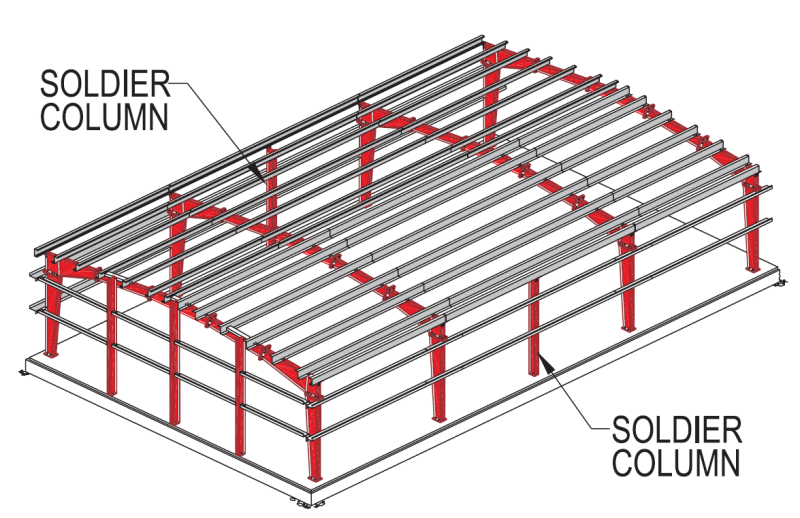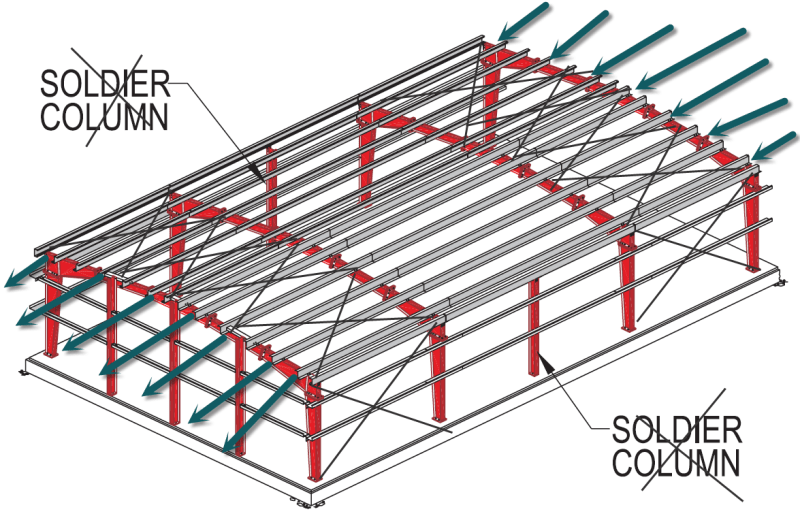h-badawy
Structural
- Jan 8, 2015
- 132
dear experts
i am reviewing now steel structural building drawings from a prominent steel vendor , and his structural system Consists of parallel hot rolled main frames run in the short direction with a perpendicular cold formed section purlins rested above the main frames,and all base supports are hinge connections , and there is no secondary beams in the long direction .
my inquiry as the following : can this building be stable against the lateral loads (ex. wind loads) in case of absence of the secondary beams which can make lateral connection between the main frames and work like a diaphragm to distribute the loads , or purlins can do this function without need to the secondary beams . .
please see attachment photo .

Thank you
i am reviewing now steel structural building drawings from a prominent steel vendor , and his structural system Consists of parallel hot rolled main frames run in the short direction with a perpendicular cold formed section purlins rested above the main frames,and all base supports are hinge connections , and there is no secondary beams in the long direction .
my inquiry as the following : can this building be stable against the lateral loads (ex. wind loads) in case of absence of the secondary beams which can make lateral connection between the main frames and work like a diaphragm to distribute the loads , or purlins can do this function without need to the secondary beams . .
please see attachment photo .

Thank you

